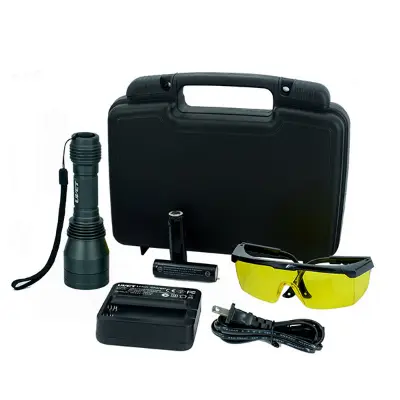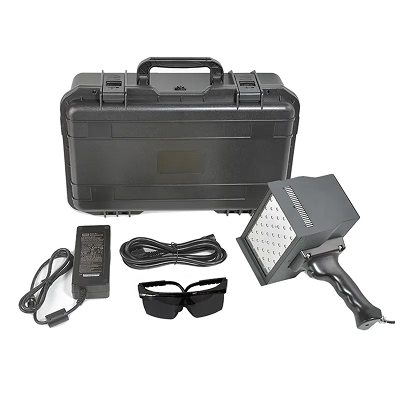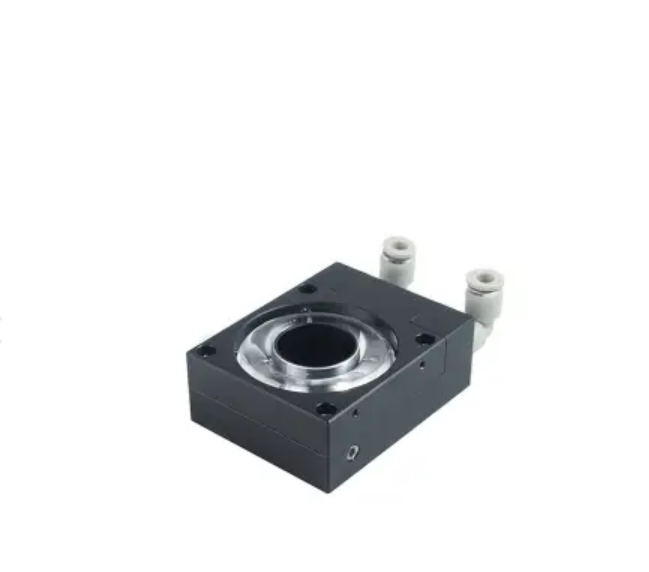What is a Spot Curing System?
Introduction
In the modern era of high-technology production, accuracy and speed are all that matter. The Spot Curing System comes in at that point. It is not any other UV curing tool. It is a disruptor to such industries as electronics, optics, medical devices, and automotive. As compared to the conventional curing lamps that require time to warm up, a UV LED System has an instant-on capability, high intensity, and unparalleled accuracy. You have micro-assemblies, curing adhesives on delicate surfaces, bonding miniature components, or want control, uniformity, and efficiency. A system provides you with control, consistency, and efficiency.
What is a Spot Curing System?
A Spot Curing System is a small-scale, high-intensity UV curing system that is designed to cure small, specific areas. It does not produce a wide-ranging surface of UV light but generates a specific UV beam that is focused to cure adhesives, coatings, and inks in the precise area required.
The technology utilizes either UV LEDs or mercury arc lamps, although new systems are increasingly adopting solid-state UV LEDs as they have good life, require minimal maintenance, and consume less energy.
The UV LED Spot Curing System
The UV LED Spot Curing System (Model: NSC4) is designed to provide high speed of curing, low energy consumption, and extended service. It is intended to be used in the industrial adhesive and coating industry to ensure accurate management of UV and low heat production. It is available in a variety of wavelengths (365nm, 385nm, 395nm, 405nm), enabling smooth transition to several hundred materials and processes and guaranteeing uniform results in electronics, optics, and the assembly of medical devices.
Key Specifications
• UV Wavelengths: 365nm, 385nm, 395nm, 405nm
• UV Spot Sizes: Φ3mm, Φ4mm, Φ5mm, Φ6mm
• UV Output: Up to 14W/cm²
• Design: Small, compact, and integrable.
This production system is available with repeatability of its processes and uniformity of its UV coverage, and constant intensity suitable for challenging production conditions.
The Characteristics
1. High UV Intensity
It achieves a high output of up to 14W/cm 2, which keeps the curing time short, and adhesion and reliability high.
2. Several Wavelength Choices
A range of 365nm to 405nm allows the operator to select the optimal choice of curing of adhesives, coatings, and encapsulants on a variety of substrates.
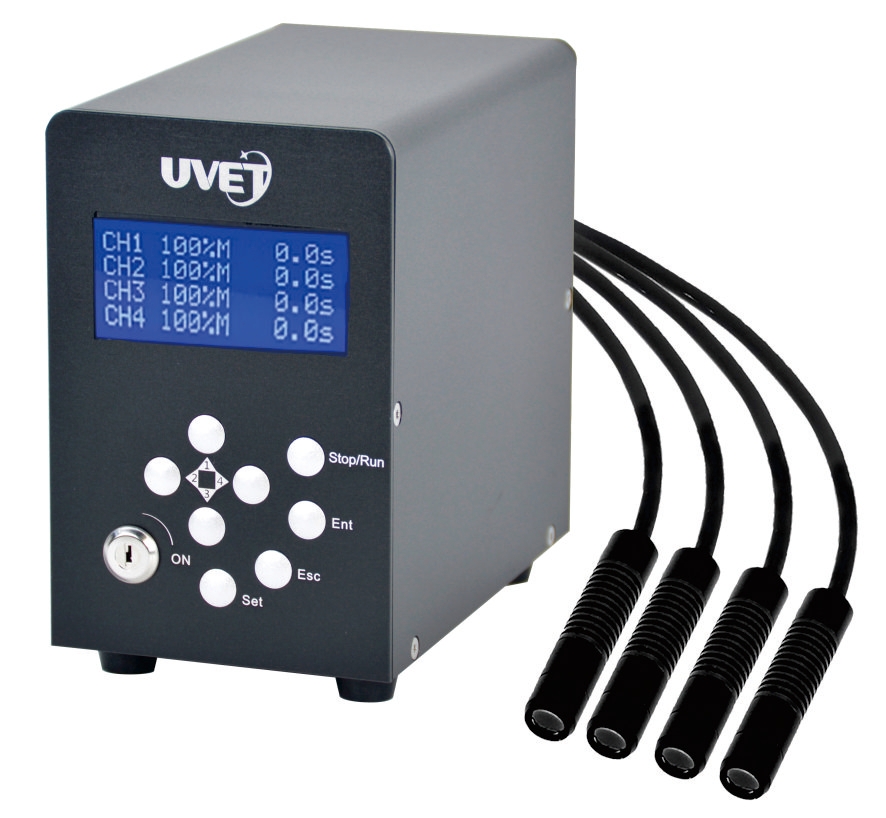
3. Compact and Modular Design
The system also easily fits into bench-top stations or automatic line production and is therefore applicable to both small-scale and large-scale production.
4. User-Friendly Operation
The simplified control interface is easy to set up and adjust, and decreases training requirements and downtime.
5. Reliable Performance
It also provides consistent UV intensity throughout lengthy production cycles, which gives a uniform level of curing quality and efficiency.
Advantages
• Homogeneous spot coverage to achieve accurate and repeatable curing.
• On-demand boot-up with zero-warm-up time.
• Environmentally friendly design without mercury.
• Long-life LEDs and reduced maintenance.
• Scalable manual or automated working.
• Reduced thermal performance to ensure the safety of valuable materials.
Planned to meet Industrial Needs
The UV LED Spot Curing System NSC4 has no bulb changes, no warming up, and no heat spread as compared to the traditional mercury-based curing lamps. It helps in the automation of industry involving programmable I/O, which is perfect in the assembly of electronics, optical bonding, and the production of medical devices.
This system combines high intensity, versatility of wavelength, as well as modular integration, whereby the performance is sustainable at reduced operational costs.
What is the Reason to Use a Spot Curing System?
1. Precision and Accuracy
These systems are designed to be used in detail, unlike flood lamps. They can cure adhesives in the micro-millimeter scales, which makes them suitable for electronics and medical equipment.
2. Energy Efficiency
LED consumes much less power compared to mercury lamps. They are environmentally friendly, lead-free, and RoHS.
3. Consistency
This system has a stable UV intensity, which does not deteriorate to provide a consistent result.
4. Low Maintenance
You never have to spend money on expensive downtime with long-life UV LEDs (20,00030,000 + hours).
5. Flexibility in Integration
They may be operated in isolation, or they may be incorporated into automated production lines.
Applications
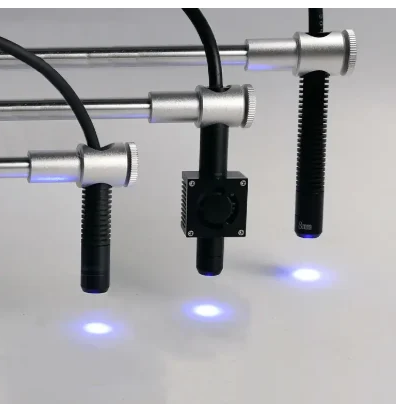
Electronics Manufacturing
• PCB assembly spot curing
• UV curing packages of semiconductors.
• Optical fiber bonding
Medical Device Production
• Syringe bonding
• Catheter assembly
• Dental device curing
Automotive and Aerospace
• Sensor assembly
• Optical lens bonding
• Wire coating and sealing
Optics and Precision Engineering
• Watch glass assembly
• Bonding curing system of optical lenses.
• Micro-assembly bonding
Technical Specifications
The parameters to be taken into account when choosing a Curing System are:
Wavelength: Adhesive requirements (365nm to 405nm).
• Output intensity: It is measured in mW/cm 2, and the greater the intensity, the faster the curing.
• Cooling system: Air-cooled or fan-cooled to achieve stable operation.
• Light guide compatibility: direct LED heads or fiber optic.
• Electronics: Programmable settings and adjustable timers.
Industry Use
Electronics Assembly
Adhesive systems on microchips and PCBs need systems that demand a lot of accuracy.
Medical Devices
Since syringe bonding to the catheter is made, spot curing is biocompatible and reliable.
Automotive Sensors
Crucial automotive parts require rapid and quality curing without room for error.
Optics and Watchmaking
Micro-assemblies such as watch glasses and lenses demand concentration of UV curing without having to influence the other parts.
In choosing your UV LED System, remember:
• Adhesive compatibility
• Wavelength options
• Portability vs. fixed system
• Automation interconnection.
• Price and reputation of the supplier.
The Future of the Spot Curing Systems
The future is next-generation UV LED curing with smarter controls, greater efficiency, and artificial intelligence-based monitoring. Expect innovations like:
• Modular curing heads
• UV curing systems fitted with IoT.
• Adaptive wavelength adjustment.
With the space demands of industries driving towards miniaturization and sustainability, curing systems can only increase in demand.
Conclusion
Spot Curing System has ceased to be a luxury. It is both needed by contemporary industries that require precision, efficiency, and environmentally friendly solutions. Our systems are redefining curing technology with such features as instant-on UV LEDs, variable wavelengths, and high reliability. Having an electronics background, medical, optics, or automotive production, a UV LED System will provide you with the precision, reliability, and performance that you require.
